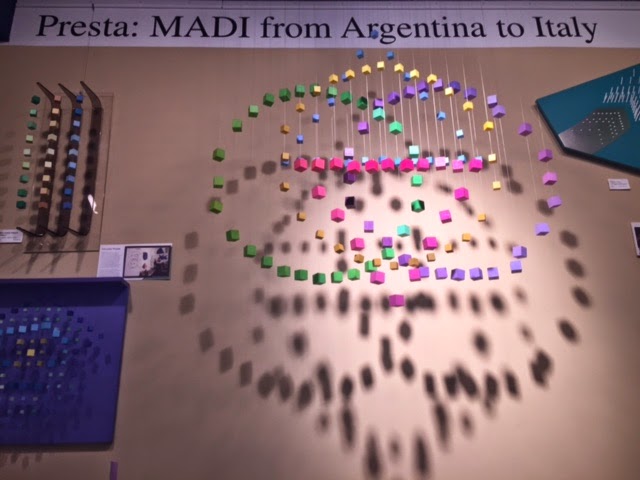By Anne Marie Burdick
Walking around the Rory
Meyers Children’s Adventure Garden at the Dallas Arboretum, I could not
help but to turn into a child again. As I navigated through the different
exhibits on nature I soon found myself in the Kaleidoscope gallery. Here I had
the opportunity to discover how geometry can be found in nature. This
particular display demonstrated how there are patterns, tessellations, and fractals
throughout nature. During my visit to the arboretum, I decided to focus my
attention on fractals in nature. A fractal is a pattern that constantly repeats
itself. Fractals can be found in tree structures, snowflakes, and some leaf
patterns. For example, the photo to the right shows a plant that has fractals in
its leaves. It is amazing the amount of geometry that can be found just outside
in your backyards. By providing students with examples of places geometry can
be found in nature, they will start to notice all the mathematics that is
around them.
|
Retrieved
from: http://www.pbs.org/wgbh/nova
/physics/mandelbrot-fractal.html
|
Before I went to the arboretum, I completed a little research
on my own and found some interesting ways geometry is found in nature through
fractals. Benoit Mandelbrot, the
founder of fractals has many extensive interviews online detailing the
importance of fractals and why it is essential to understand it in geometry. In
a particular interview
that I read from 2008, Mandelbrot emphasized how natural structures are not
perfect shapes. For example, clouds do not have smooth sides, rather they are
rough, and that is why fractals are important to understand.
An activity
that teachers could have their students complete in the classroom is Fractals in High School: Exploring a New
Geometry by, Randi Lornell and Judy Westerberg. This activity had students
complete hands-on activities that led them to discover what fractal geometry
was. This article gave four mini activities that could be completed. By
integrating activities like these in the classroom, teachers will be having
their student explore topics from a new approach. It allows students to make
connections to geometry and the nature around them.
A second lesson that I found interesting was a lesson
from PBS on fractals and the coastline. This lesson had students use fractals
to find the length of a coastline. Just like other natural structures, a
coastline is not a smooth, straight surface. It has ridges and edges. Therefore, fractals
are a great way to investigate the actual length of different coastlines.
Through the integration of geometry and nature, students
will be able to see the mathematics in the world around them. By giving
students the opportunity to research where geometry is found in nature we are
providing them with the chance to relate to the topic. The Dallas Arboretum is
a great place to start if you want to get your students minds wondering outside
of the classroom.
























.jpg)






































